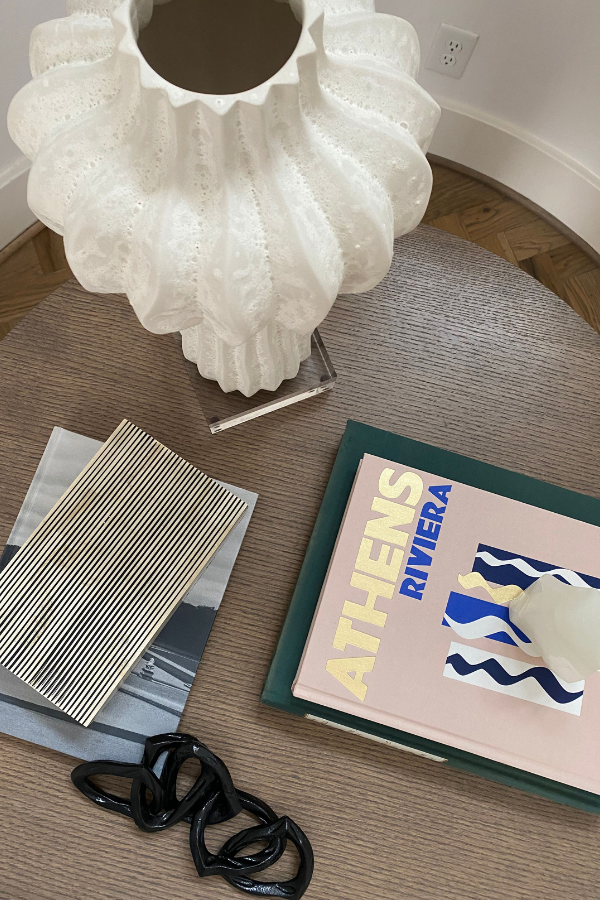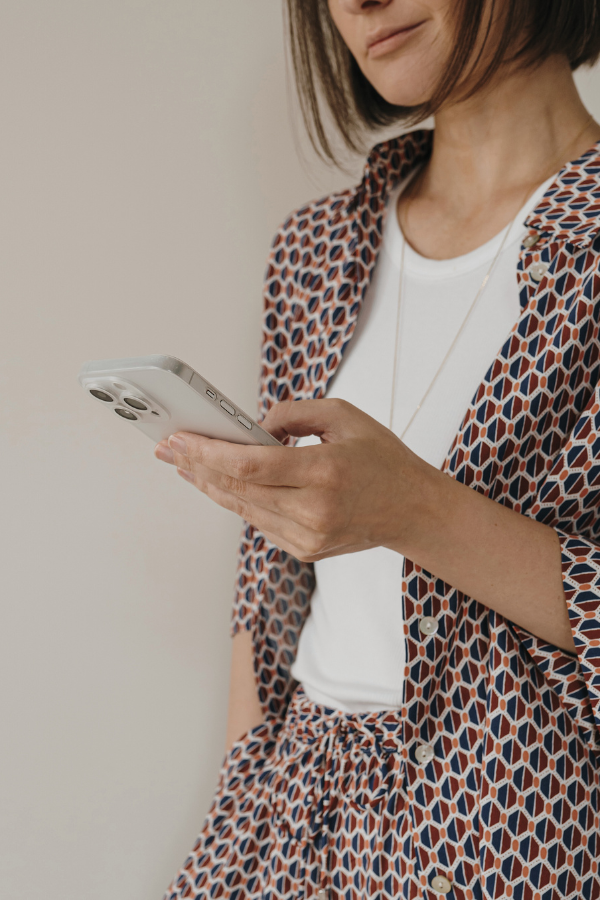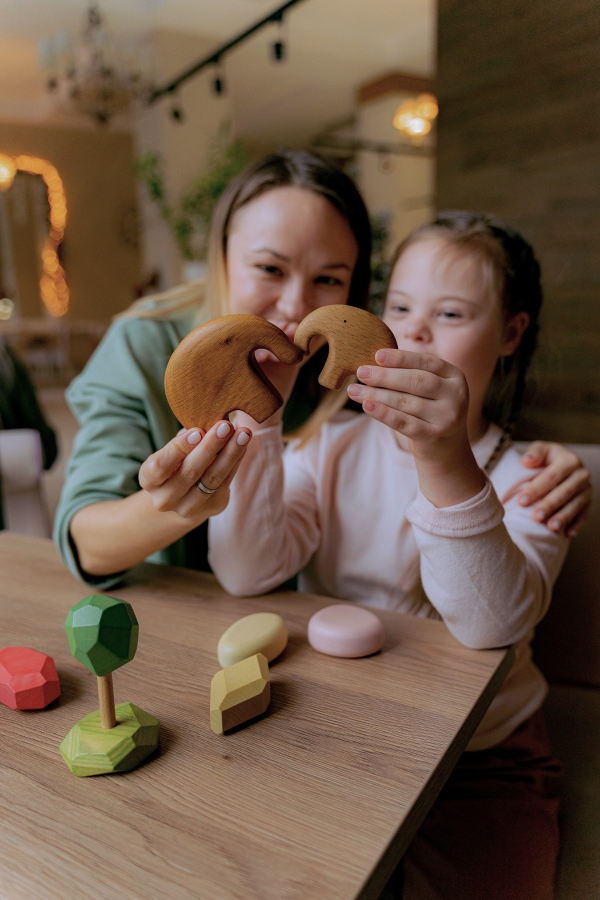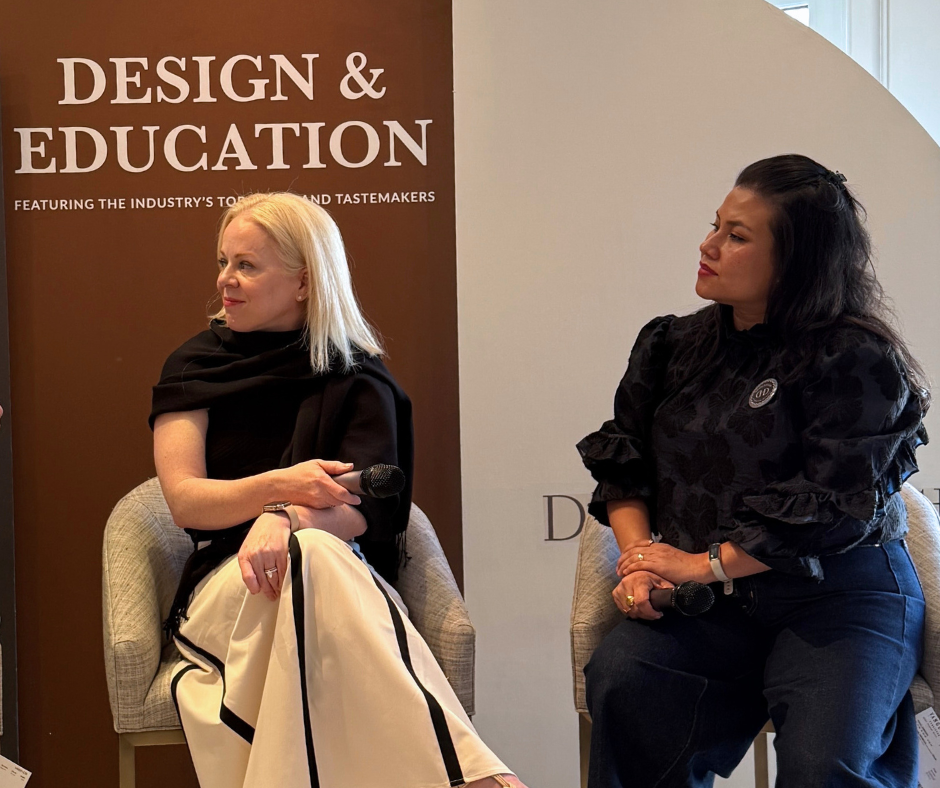
A Circle, Not a Ladder: The Power of Peer Mentorship in Interior Design
Summary
Mentorship in interior design doesn’t have to follow a traditional, hierarchical model. Instead, peer-led mentorship—where designers support each other regardless of experience level—can be profoundly impactful. Such relationships foster shared growth, combat isolation, and help overcome challenges like imposter syndrome. Communities like DesignDash exemplify this approach. Here, you’ll find a nonjudgmental space where designers can connect, share experiences, and grow together.
Reflection Questions
How has imposter syndrome affected your willingness to seek or offer mentorship in your design career?
In what ways can engaging with a community of peers enhance your professional development compared to traditional mentorship models?
What unique experiences or insights from your design journey could be valuable to share with others in a peer mentorship setting?
Journal Prompt
Reflect on a time when you felt uncertain or isolated in your design career. How might a peer mentorship relationship have provided support or guidance during that period? Consider the qualities you would value in a peer mentor and how you can embody those qualities to support others in your community.
Every designer knows that this industry can feel competitive, overwhelming, and at times isolating, but it doesn’t have to be that way. When women in design support each other through mentorship, we create a safer, more collaborative environment where we all succeed together instead of at each other’s expense.
A mentor can help you identify your blind spots, navigate tough client situations, and feel less alone in an industry that often glamorizes hustle culture and solo success. On the flip side, being a mentor helps you reflect on your own journey, refine your leadership voice, explore new ideas, and contribute to the future of the profession.
Both aspiring designers and those who operate their own interior design businesses can benefit from a mentorship program, but it doesn’t have to be so formal. Let’s explore the benefits of finding your match through associations like ASID and making connections more informally via an online community.
Addressing a Hidden Barrier: How Imposter Syndrome Holds Women Back from Mentorship
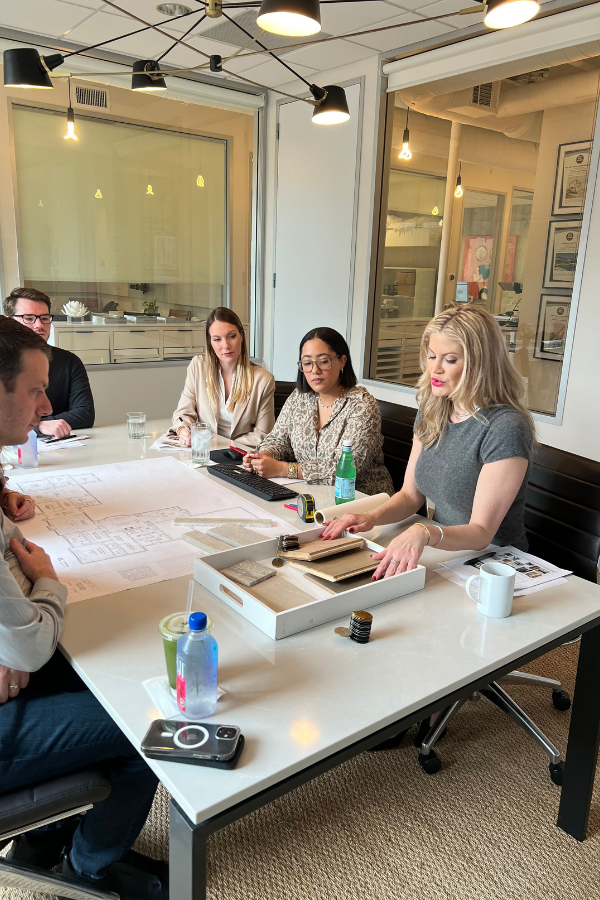
Before we discuss mentorship and underscore its value, we should talk about what may have held you back from participating in a community, seeking support, or reaching out to other women in the industry. Even though mentorship and community are proven to fuel personal and professional growth, Imposter Syndrome can quietly convince women they’re not ready, not good enough, or not “qualified” enough to participate.
Self-Doubt Can Sound Like a Script
Imposter Syndrome often presents itself through intrusive, discouraging thoughts like…
- “I can’t reach out to her; she has a team and a full-service firm. I’m just working from my dining room table.”
- “What if I ask a dumb question in the group chat and everyone realizes I don’t actually know what I’m doing?”
- “I’ve only been running my business for two years. Who am I to offer advice to anyone else?”
- “My last project didn’t go smoothly; how could I possibly mentor someone when I’m still figuring things out myself?”
These internal messages are often false but deeply felt. Unfortunately, they can stop talented, driven women from reaching out to a mentor, offering support to others, or even showing up fully in community spaces. The truth is that you’re probably more ready (and more qualified) than you think.
Whether you’re one year or ten years into your interior design career, you have value to share—and value to gain—from mentorship. You don’t need a perfect track record or a polished brand; you just need to be open to connection.
Imposter Syndrome Makes Community Participation Feel Risky—But That’s Exactly Why You Need It

Participating in a design community can feel intimidating when you’re struggling with self-doubt. You might hesitate to post a question in a group thread, afraid it’s “too basic.” You might lurk on calls or workshops but rarely speak up, worried you’ll say the wrong thing. You might even wonder if you belong in the room at all.
Finding Belonging in Shared Experience
That’s exactly why community is so powerful. You finally realize you’re not alone when you hear other experienced interior designers voice your exact worry about the market, reveal a client mistake they made just last week, or express frustration over dynamics at their firm.
DesignDash, in particular, was built to create that safe, nonjudgmental space in the interior design industry. Here, even the most successful interior design firm owners can admit they don’t have all the answers and still belong.
You Don’t Have to Be “Ready” to Mentor—Just Willing to Show Up Honestly
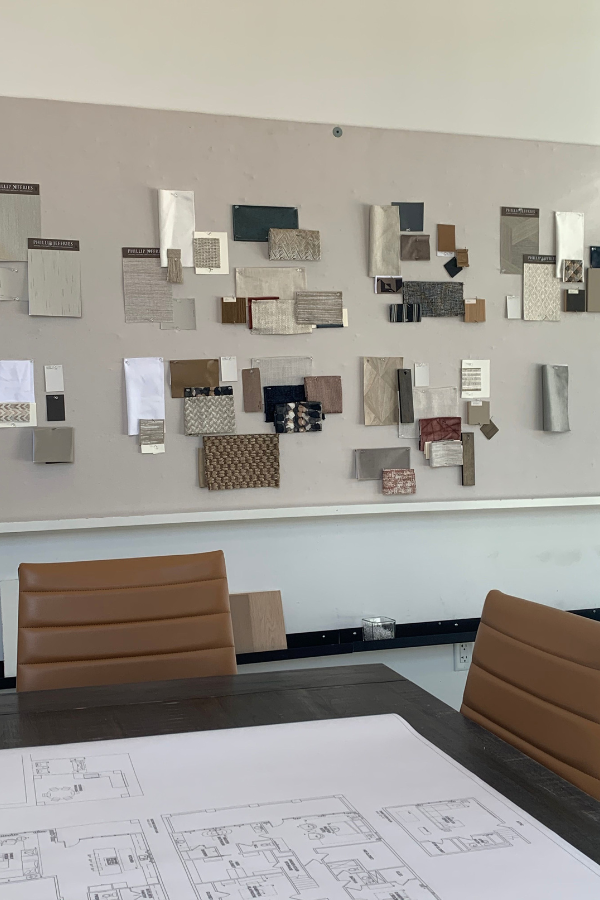
Many women hold off on becoming interior design mentors because they believe they need more experience, more success, or more “proof” they’re qualified to lead. Of course, that’s the Imposter Syndrome talking.
Imperfect Stories Are Often the Most Meaningful
The truth is that mentorship doesn’t require perfection, just honesty. You don’t need to have all the answers or all the tools or all the evidence. You just need to show up for that initial conversation and be willing to share your story. Mentorship doesn’t always mean pointing someone in the right direction; sometimes, it’s more about being open than being a leader.
Someone out there is two steps behind you and would love to hear how you navigated your first client contract, rebranded your firm, or overcame a creative block. Sharing those stories with other professionals—even casually in community spaces—is a form of mentorship. Showing up imperfectly is often what makes that mentorship the most impactful.
A Note on Representation: Why Feeling Like an Outsider Is Sometimes Systemic

Imposter Syndrome might feel like your own personal shame, but it’s rarely solely a mindset issue. Instead, it’s often a reflection of real, systemic barriers. Women, especially those from marginalized backgrounds, may not see themselves represented in leadership or creative authority. That lack of representation can make you question whether you belong or whether your success is sustainable.
Redefining What Leadership Looks Like
As we’ve explored in our Imposter Syndrome article, these feelings are not irrational. They’re often reinforced by years of bias, exclusion, or being “the only one in the room.”
This is why mentorship and community can be acts of resistance and redefinition. Every time a woman mentors another or asks for support, she chips away at those old narratives and helps rewrite what leadership in interior design looks like.
Why Mentorship Matters

Female interior designers face a specific, nuanced set of challenges. While the field is largely female-dominated in terms of participation, leadership roles, high-value commercial contracts, and firm ownership are still largely male-held. This creates a frustrating paradox for us; many women are doing the work, but fewer are recognized at the top.
Redefining Mentorship as a Tool for Perspective and Protection
On top of this, there’s the constant juggling act that so many women in the industry undertake. Balancing caregiving, running a household, maintaining client relationships, and trying to grow a profitable design business can feel like spinning plates above your head while on your tip-toes with your hands tied behind your back. The pressure to be everything to everyone is real and often negatively internalized.
This is why growing your professional network is important, even when it feels embarrassing or like yet another chore. A trusted mentor or business coach can guide you through difficult client dynamics, validate your pricing decisions, and help you carve out boundaries that protect your time and energy. They can remind you that saying “no” is a leadership move and not a failure. Most importantly, they offer perspective because they’ve been there, too.
Just as valuable is the representation that a mentor provides. Seeing another woman own her expertise, lead a team, and build a creative business on her own terms makes the path feel more traversable. It normalizes ambition. It reframes rest as a strategy. And it shows that leadership or success doesn’t have to look a certain way to be legitimate.
Exploring Ways to Be a Mentor and Benefit from One
Formal Mentorship (Might Be Ideal for Students and Recent Graduates)
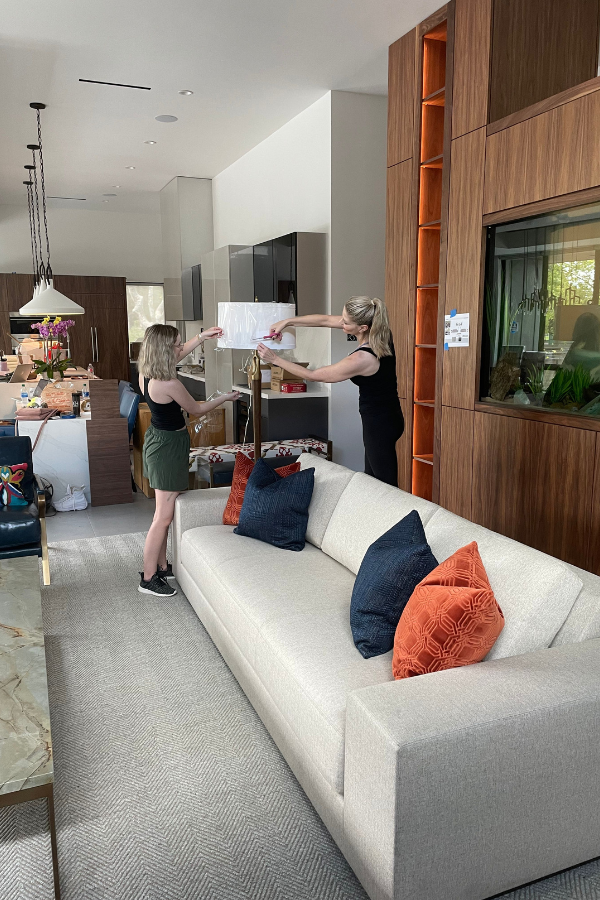
For women seeking structured support in their design careers, formal mentorship programs through professional associations can be incredibly impactful. Organizations like ASID, IIDA, and even local AIA chapters often facilitate mentorship initiatives that pair early-career or pivoting designers with established professionals.
These programs typically include an application and matching process, scheduled check-ins, and a timeline for mentorship goals. This kind of framework is ideal for designers who thrive with accountability and a clear sense of direction. You know when you’ll be meeting, what you’ll be working on, and how to track your progress.
Engaging in formal mentorship also adds to your professional credibility in addition to opening up new opportunities and helping you develop skills. If you’re a mentee, you demonstrate initiative and a growth mindset. If you’re a mentor, your participation signals leadership and a commitment to giving back to the industry.
Formal Mentorship Through ASID: What to Expect
If you’re seeking a structured and supportive way to grow your interior design career over a couple of months, ASID’s mentorship program might make sense for you. This program connects students and emerging professionals with experienced industry leaders. Whether you’re still in school, have recently graduated, or are looking to mentor the next generation of designers, this program might appeal to you.
ASID Summer–Fall 2025 Mentorship Program
The Summer–Fall 2025 Mentorship with Design Careers by ASID is specifically tailored to student members and recent graduates. Registration runs from May 12 through June 18, 2025, and the official mentorship period takes place from July 21 through November 21, 2025.
This program pairs mentees with mentors based on shared design interests, goals, and availability, with flexible options for virtual or in-person meetings. Participants are encouraged to connect at least seven times over the course of the four-month program, though the meeting schedule is fully customizable based on what works best for the pair.
The curated matching system allows mentees to browse mentor profiles and filter by location, design focus, or preferred mentorship style. Once connected, mentor/mentee pairs will have an initial conversation before the match is confirmed. The result is a mentorship that feels both intentional and personal—rather than random or rigid.
If you’re interested in joining, visit the Mentorship Program Guidelines for all the details, timelines, and application steps.
Informal and Peer-Led Mentorship (Might Be Best for Firm Owners and Experienced Designers)
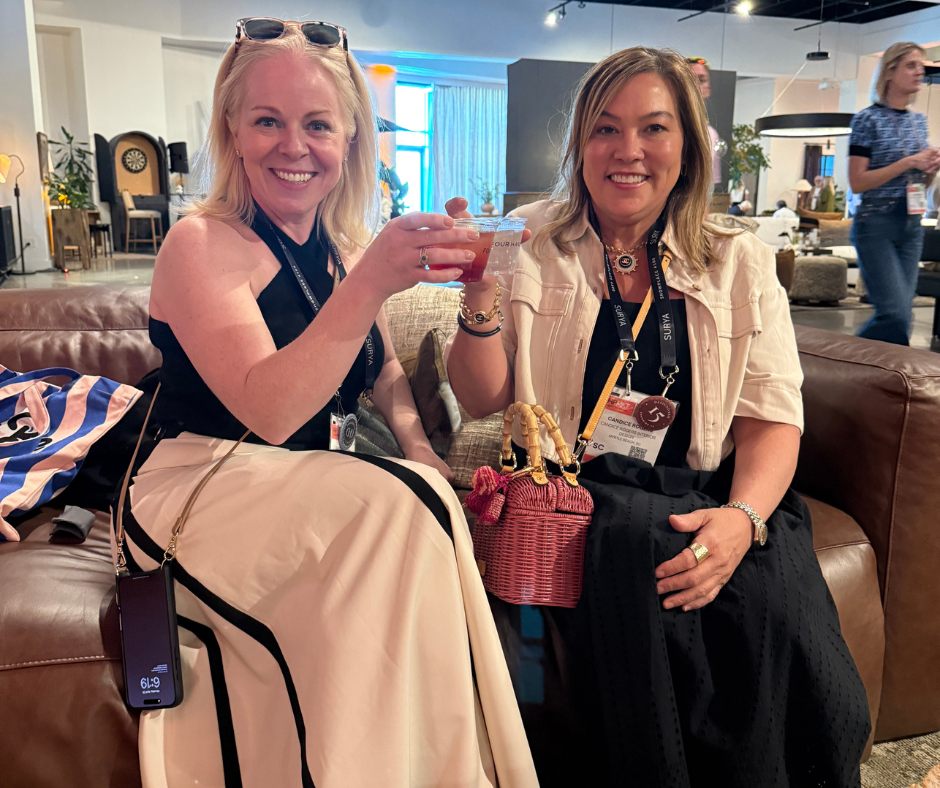
Not all mentorship needs to follow a timeline or come with a contract. In fact, some of the most meaningful professional growth happens through casual, unstructured relationships that evolve organically over time. Peer-led mentorship—particularly within communities like DesignDash—is invaluable.
In a peer-based environment, mentorship often looks more like conversation than instruction. You might hop on a casual Zoom with another designer to talk through a challenging client situation, join coffee chats each month, or drop a voice note in a group chat when you’re second-guessing your pricing structure.
What makes this kind of mentorship so powerful is the emotional safety it creates. There’s no need to posture or pretend. You can admit that you’re overwhelmed, confused, or simply stuck. And you can receive support from women who are navigating the same challenges in real-time.
Peer mentorship also levels the playing field. It removes the hierarchy of “expert” and “novice” and replaces it with mutual respect and shared experience. In these spaces, everyone has something to offer, and everyone has something to learn.
Starting an informal mentorship doesn’t have to be complicated. It could be as simple as sending a DM, asking a question during a workshop, or offering to connect with someone whose story resonated with you. These small actions can turn into significant relationships that, over time, can reshape your entire approach to business and creativity.
Come to the Table: Why Community Matters for Established Designers

While formal mentorship programs like ASID’s are incredibly valuable for students and emerging professionals, they’re not always built for the needs of established designers—especially those who are running their own firms or considering making that leap. If that’s you, your schedule is likely packed, your questions are more complex, and what you need most isn’t always a formalized one-on-one mentorship. You need a space to think out loud, test ideas, and get answers from people who understand what you’re navigating right now.
In communities like DesignDash, support looks different. It’s not just top-down, one mentor to one mentee advice. It’s a network of balanced, reciprocal relationships where you can learn from others, offer your own insight, and feel less alone in the day-to-day realities of growing a design business. The community is filled with potential mentors (even you).
Unlike Emerging Designers, You Have Business Questions
At a certain point, interior design becomes less about the color palettes or mood boards and a lot more about business. Profitability. Hiring. Contracts. Boundaries. These are topics that most of us were never formally trained in and they’re rarely the focus of traditional mentorship programs in the interior design industry. Still, you need guidance on these issues if you’re going to make your interior design business successful.
In a community setting, you can pop in with a pricing question, see how other designers structure retainers, or find out how someone else handled a complex client relationship. You can join a group call with a coach, attend a live workshop, or even just lurk and learn while others talk through their own challenges. Sometimes, simply hearing how someone else solved a problem is more powerful than any scheduled sit-down could be.
You’re Seeking Connection Without the Pressure
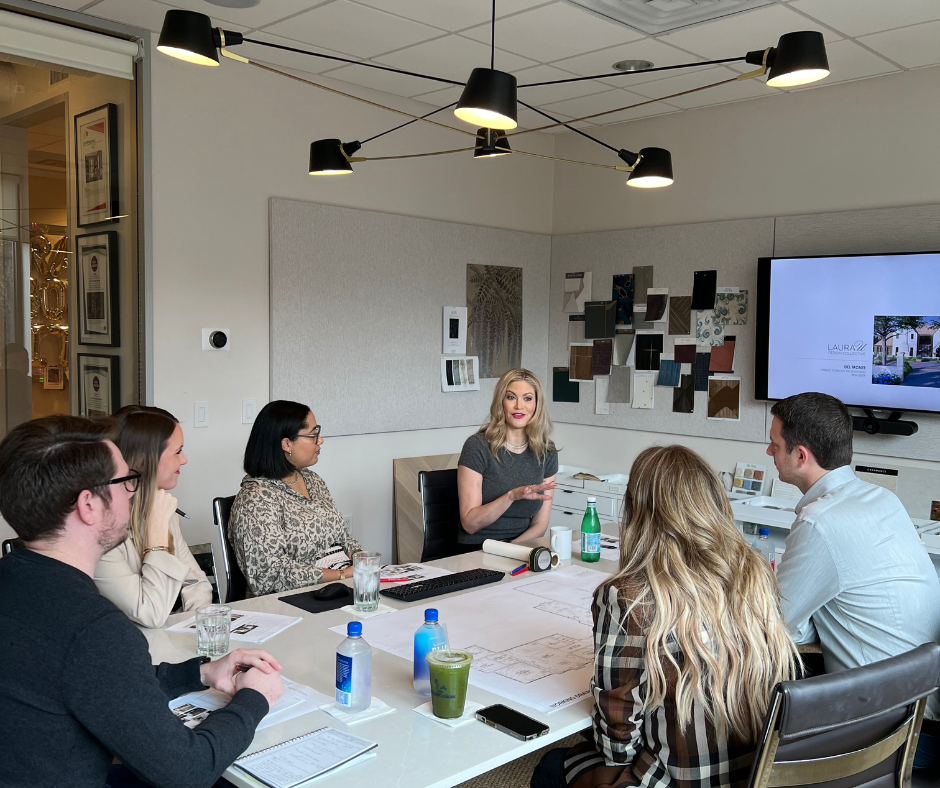
One of the biggest benefits of a design-focused community platform is how accessible and low-pressure it feels. You don’t need to schedule a formal call, prepare an agenda, or feel like you have to “impress” someone with your progress. You can engage casually on your own terms and timeline. That flexibility is a huge benefit for women who are juggling firm ownership, family responsibilities, and personal growth all at once.
The Power of Peer-Level Insight
In DesignDash, many of the most impactful conversations happen between designers at similar stages of growth—whether they’re solopreneurs hiring their first contractor or firm owners scaling to a team of ten. There’s a sense of mutual understanding, and often, mutual mentoring.
One interior design business owner may have just figured out how to streamline their onboarding process. Someone else might be trying out a new marketing strategy. These aren’t theoretical conversations but practical, lived-in, and immediately useful exchanges of ideas.
When you do need more targeted support, DesignDash gives you access to experienced designers and coaches who’ve been where you are. Here, you’ll find expert insight and peer connection all in one place.
Gaining Momentum Through Informal Mentorship
Strong communities do offer mentorship, but more importantly, they help you gain the momentum you need to take your own interior design business to the next level without losing yourself. The kind of quiet accountability and consistent inspiration you seek comes from being surrounded by interior designers who want to see you succeed while actively working toward their own goals.
DesignDash is a space for women who are building firms, refining their processes, questioning their next moves, and figuring it out as they go. You don’t need to have everything figured out to join.
Getting the Most Out of Informal Mentorship in a Community Like DesignDash
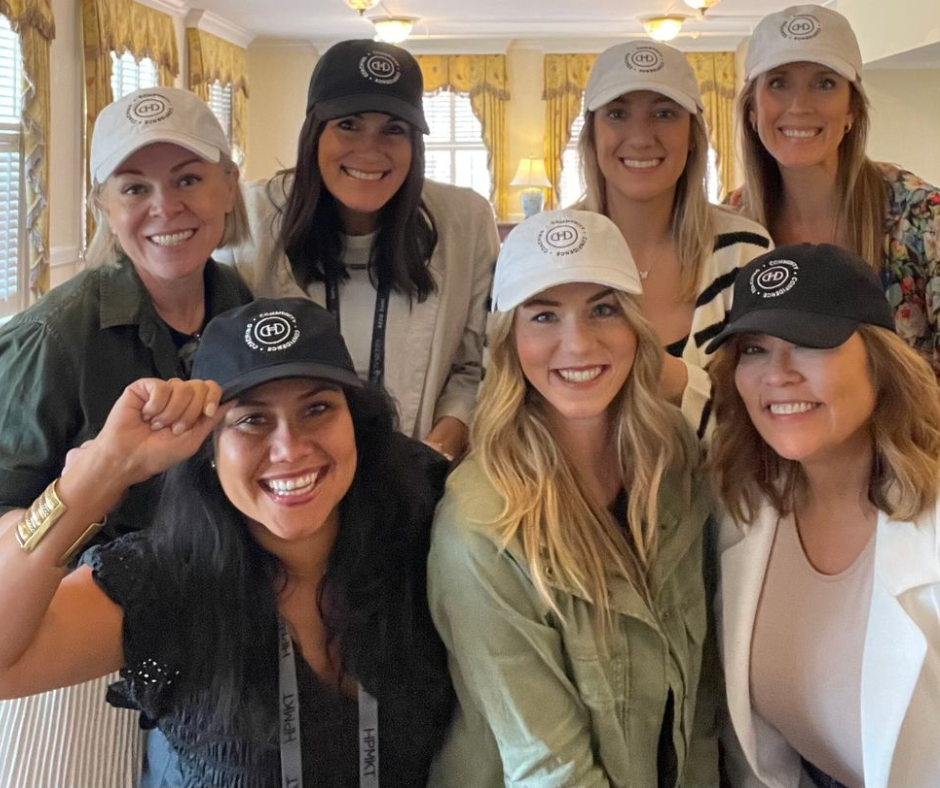
Once you’ve signed up, you might find yourself wondering, “How do I make it count?” Unlike a formal program with calendars and contracts, community-based mentorship is more fluid. That flexibility is what makes it accessible, but it also means the experience is largely shaped by how you show up and communicate with others.
Start by Observing, Then Engage
If you’re unsure where to begin, start by listening and learning. Join a few live calls or watch the recordings. Read through community discussions. There’s value in simply seeing how other interior designers think, make decisions, and navigate the same kinds of business questions you’re asking. Communication is key, but you can lurk a little if you like.
Once you feel ready, start engaging in small ways: leave a comment, ask a question, send a thank-you message to someone whose insight resonated with you, reach out to our founders Melissa and Laura. In a peer-led space, casual contributions often spark deeper relationships.
Get Specific with What You Need
The more specific you are about what you’re looking for, the more helpful the community can be. If you’re struggling with scope creep, billing for each designer’s work, or setting client boundaries, say that. If you’re about to raise your rates but aren’t sure how to communicate it—ask.
Informal mentorship thrives on real-time, in-the-weeds questions. You don’t need to wait for the perfect moment or the perfectly polished problem. Just bring what you’re working through. Chances are, someone else has been there.
Lean into the Tools and Resources
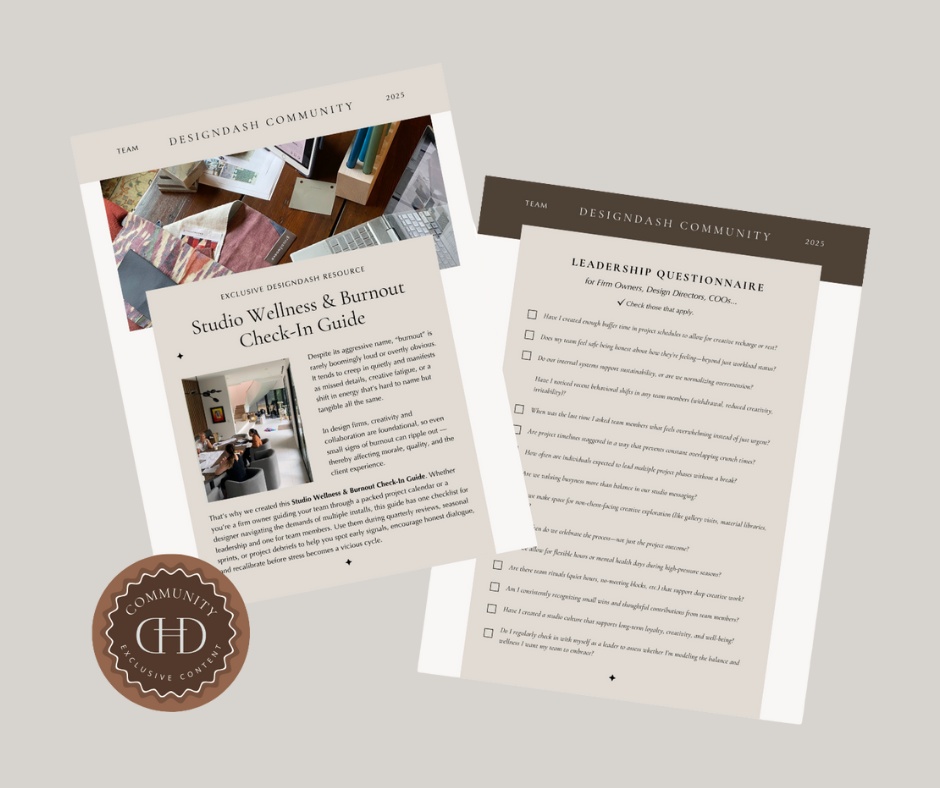
One of the best ways to complement informal mentorship is by pairing it with tangible tools. DesignDash offers done-for-you templates, live workshops, incredible articles, business challenges, and expert-led sessions—all designed to make your next step easier. Using the resources in tandem with mentorship conversations can accelerate your growth—especially if you don’t talk much yourself.
Take Initiative, Then Pay It Forward
You don’t have to wait to be chosen; you can choose when and how to contribute. That might mean offering advice to someone newer, jumping into a brainstorm thread, or volunteering a resource that worked for you.
Even if you don’t see yourself as a mentor, your insight has value. Even your questions have value. In informal spaces, leadership looks like generosity of spirit, not curated perfection. None of us are really looking for the latter; we want something real.
Remember, giving back doesn’t have to be grand. Sharing what worked for you last week could be the thing that unlocks someone else’s progress today.
Designing the Future of Our Firms Together
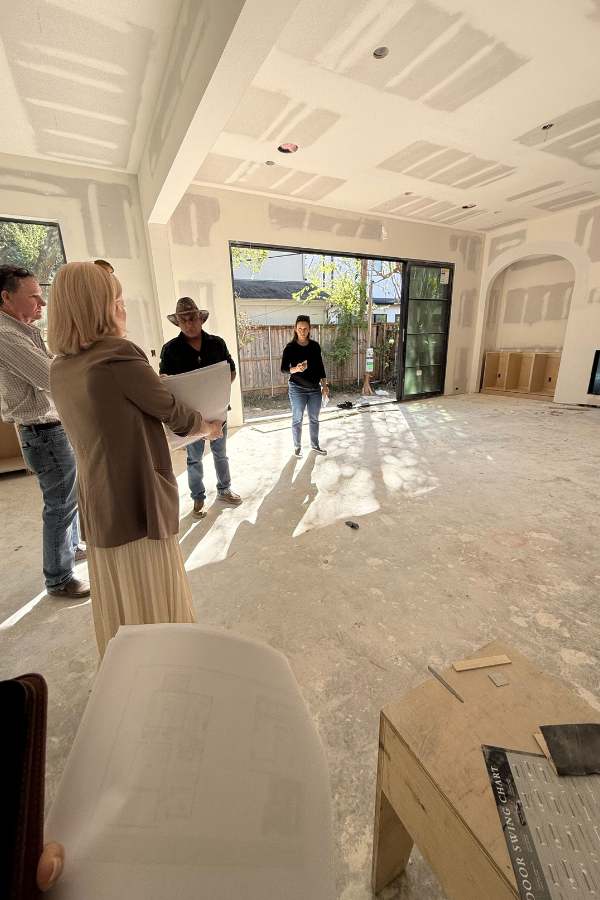
Mentorship among women in interior design isn’t just about building skills or advancing your career at a faster clip. It’s also about shaping the future of the interior design industry together. We’re working towards creating a culture in which collaboration replaces competition, vulnerability is viewed as a strength, and success is shared instead of gatekept.
We can’t control every external challenge, but we can build a foundation of community and support that keeps us moving forward—especially when things get hard.
If you’ve been waiting for the perfect time to reach out, ask for advice, or offer support to another designer—this is it. You don’t have to do everything. Just take one small step: join a community created for you.
It’s time for all of us to design the lives (and businesses) we love.
Other DesignDash Resources to Explore
